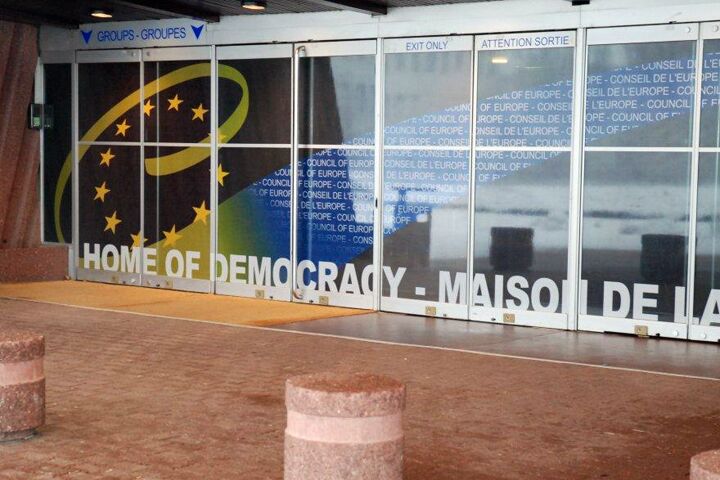
Democracy and the Palace of Europe
Strasbourg, France—It seems incongruous. Why would the lead institution of a “democratic” federation of nations intent on doing away with the nation-state need a palace? Is not such a building symbolic of a kingdom or an empire? Yet the Council of Europe, comprising a collective of 47 “democratic” nation-states, is ensconced in a building called “The Palace of Europe.” Well, there is an interesting story attached to just what that “palace” symbolizes.
Founded on May 5, 1949, by the Treaty of London, the initial Council comprised the constitutional monarchies of the United Kingdom, Belgium, Denmark, Netherlands, Norway and Sweden, the republics of France, Ireland and Italy and the Grand Duchy of Luxembourg. Within the complex web of institutions that comprise the project of uniting Europe, in the words of Jean-Claude Juncker, prime minister of Luxembourg and president of the EU’s Eurogroup, “the Council of Europe and the European Union are partners—different but complementary organizations.” Any nation that aspires to European membership must first become a member of the Council of Europe, though the EU itself is not a member per se of the Council—if you can figure that out. In a report on relations between the Council of Europe and the EU, Juncker recommended that the EU accede to Council membership. To this the EU has yet to agree.
The European project is by its nature a complex and confusing entity, born of machinery that deliberately and regularly produces treaties and subsequent regulations couched in language barely understandable to the average intelligent human being. So much of the murk behind which European elites hide their true intentions is masked by a facade of “democracy,” which effectively hides its very undemocratic nature. Thus it is no surprise to see at the entrance to the Palace of Europe, home of the Council of Europe, in huge block letters the caption, “Home of Democracy.”
No greater lie was ever told.
As the best of analysts have constantly observed, the European Union is the very antithesis of democracy. Governments of its member nations have either deliberately denied their constituents referenda on key decisions (witness Britain) or, as in the case of Ireland, have not accepted the outcome of referenda as legitimate. The EU has then propagandized the people with a blitz of deceit designed to change their minds to vote against their true feelings and for the EU’s unbending undemocratic designs. Major decisions resulting in the diminution of national sovereignty are taken by EU mandarins without any thought of reference to the people the EU hierarchy supposedly represents.
Standing in the front of this Palace of Europe on an intensely snowy day in Strasbourg, one cannot but feel that the chill wind of deceit that has blown constantly across the whole European Union project from its very beginnings is rapidly reaching a point where the blindness to its true undemocratic nature is so close to achieving its aim: the aim of dragging the masses, against their will, into the maw of a grand tyranny. A tyranny of a nature that has an all-too-familiar “Holy Roman” ring to it. For the true story behind the Palace of Europe is that it is not symbolic of the “home of democracy” at all. It is, rather, a grand mask behind which the project to resurrect the seventh and final formulation of that old and very bloody imperialist regime, the Holy Roman Empire, currently hides.
But the mask is increasingly dropping, revealing the real nature of this political beast. As the current euro crisis continues to develop, affecting not just the 27 member nations of the EU but the entirety of the 47 member nations of the Council of Europe, the true intentions of its elites are emerging.
“From 1950, the Council of Europe’s action became reality with the adoption of an international treaty of an unprecedented importance, the Convention for the Protection of Human Rights and Fundamental Freedoms, called ‘European Convention on Human Rights.’ This convention defines the rights and freedoms that all signatories’ states promise to guarantee to individuals under their jurisdiction, from the right to life and freedom of expression, to the prohibition of torture and discrimination.”
Sounds good, doesn’t it? Well, yes, till one discovers the true intent behind new EU legislation. It is actually designed to actively deny the individual such “rights and freedoms.” It does so by the imposition of draconian measures to extradite and incarcerate civilians of not only EU member nations, but even foreign nationals hailing from non-EU member countries, in EU jails without recourse to legal representation and hold them at the EU’s pleasure. Such is the power of the newly enacted European Arrest Warrant.
This is “Holy Roman” jurisprudence in action at its very worst. In fact, it entrenches the horror of Roman inquisitorial law—which holds an individual as “guilty till proven innocent”—over and above the tradition of English law, being founded on the binding principle of “innocent until proven guilty.”
Far from the Palace of Europe being the “home of democracy,” it is an infamous monument to the very worst of “Holy Roman” imperial practices—the evil of the “holy” inquisition. Never was there such an edict contemplated by this most undemocratic of imperialist institutions, the European Union, that so exposed it as a literal resurrection of the Holy Roman Empire than this latest move by its Teutonic Roman Catholic elites.
Home of democracy, my foot!
Palace of tyranny would be more apt!
Read our exposé of this latest hugely undemocratic move by the EU in tomorrow’s analysis, written from the country that mothered the principle of habeas corpus, Great Britain.
